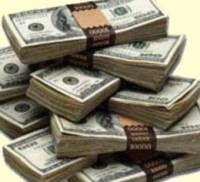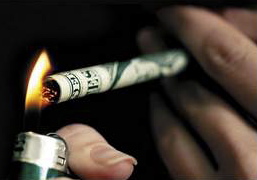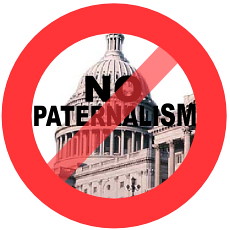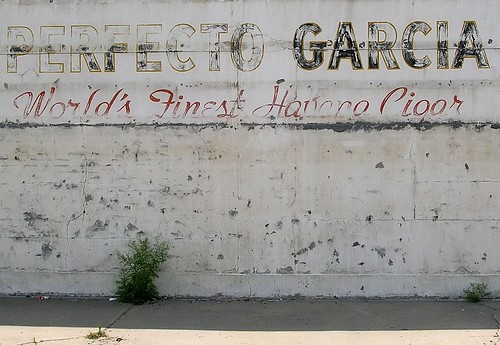Stogie Commentary: Some Oft-Overlooked Ammunition
25 Jul 2007
Raise your hand if you’re sick of reading about Congress’ proposed legislation that would increase federal taxes on cigars 20,000 percent. Yeah, that’s what I thought.
 Ever since news broke last week of anti-tobacco extremists’ most egregious and vile scheme since the adaptation of the smoking ban, the cigar world has turned upside down. It’s impossible to read anything stogie-related these days without some mention of the possible tax hike from five cents to up to $10 per stick.
Ever since news broke last week of anti-tobacco extremists’ most egregious and vile scheme since the adaptation of the smoking ban, the cigar world has turned upside down. It’s impossible to read anything stogie-related these days without some mention of the possible tax hike from five cents to up to $10 per stick.
But maybe that’s a good thing. Cigar manufacturers, retailers, and enthusiasts are more united now than ever before. This newfound camaraderie is largely a result of the media – television, newspapers, radio, and the Internet – and their willingness and ability to get the word out. After all, if we don’t band together and take some action, the smoking police will trample our collective rights faster than you can say “Connecticut Broadleaf.â€
With that spirit in mind, I’ve thrown together a few interesting articles with oft-overlooked points that will add fuel to your fire and give you more ammunition when you call your senators.
For the Children?
This Human Events article points out that “the proposed tax will supposedly go to funding health care programs, but recent history should cause us to beware of such claims. Remember the big tobacco settlement that came about in the late 1990s? The funds from the settlement were supposed to go to healthcare, but as this article notes, much of it went instead to highway repairs and school construction. Who really thinks that the allocation of funds from a $10 cigar tax will be any different?â€
A New Black Market
Aside from highlighting several retailers who predict they will be out of business if the bill passes, this Arkansas News Bureau article quotes a tobacco store owner who suggests “the black market, which supplies many Americans with illegal Cuban-made cigars, would be expanded to include the non-Cuban varieties†once the price of legal cigars is driven up by the tax.
Tobacco as the Enemy
Like many concerned aficionados, Sarah Soza, owner of a small, family-operated B&M in California, wonders why cigars are targeted over other, more dangerous goods. The Fresno Bee reports that “she doesn’t understand why the cigar industry is included in the health insurance funding bill, while other industries such as soft drink and candy makers are not…‘I believe in providing health insurance for children, but why are we the only ones paying for it?’â€
Tags: cigars

 Of course, the list of possibilities to consider is almost endless. Taste, flavor, strength, size, smoke, burn. And on and on.
Of course, the list of possibilities to consider is almost endless. Taste, flavor, strength, size, smoke, burn. And on and on. I think the first thing to impress on any legislator is that for tax revenue, cigars are a poor resource to mine. On a state level, in fact, the cost of collecting and recording the taxes could come close to the amount paid. And that’s not even factoring in the potential cost if the state starts trying to police Internet sales or is forced to deal with a black market.
I think the first thing to impress on any legislator is that for tax revenue, cigars are a poor resource to mine. On a state level, in fact, the cost of collecting and recording the taxes could come close to the amount paid. And that’s not even factoring in the potential cost if the state starts trying to police Internet sales or is forced to deal with a black market. I’m writing to you from California, home of one of the first statewide smoking bans for bars and restaurants. During a visit to one of the Golden State’s many bars, a friend lit up a cigarette in violation of the ban.
I’m writing to you from California, home of one of the first statewide smoking bans for bars and restaurants. During a visit to one of the Golden State’s many bars, a friend lit up a cigarette in violation of the ban.
 Scientists said the element apparently is a byproduct of the cigar rolling process and does not appear naturally in tobacco. Its impact can be felt when the cigars are resting in the humidor or upon lighting.
Scientists said the element apparently is a byproduct of the cigar rolling process and does not appear naturally in tobacco. Its impact can be felt when the cigars are resting in the humidor or upon lighting. Patrick Ashby
Co-Founder & Editor in Chief
Patrick Ashby
Co-Founder & Editor in Chief Patrick Semmens
Co-Founder & Publisher
Patrick Semmens
Co-Founder & Publisher George Edmonson
Tampa Bureau Chief
George Edmonson
Tampa Bureau Chief